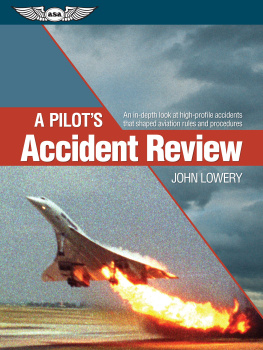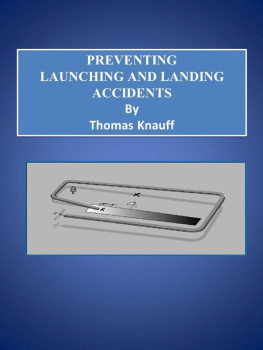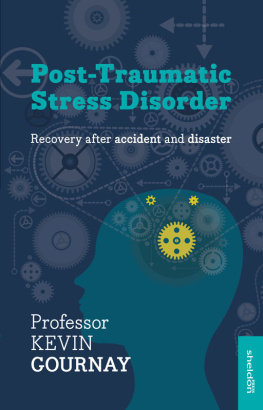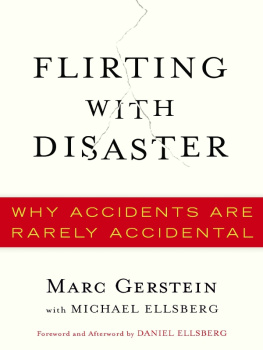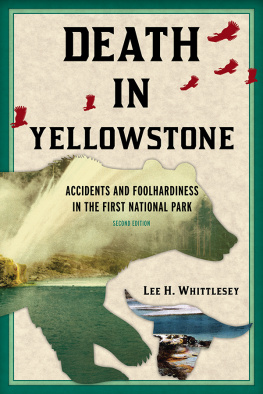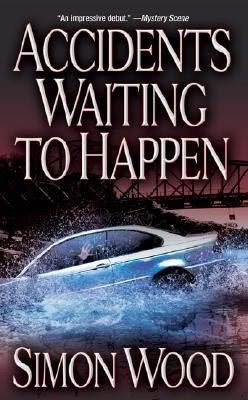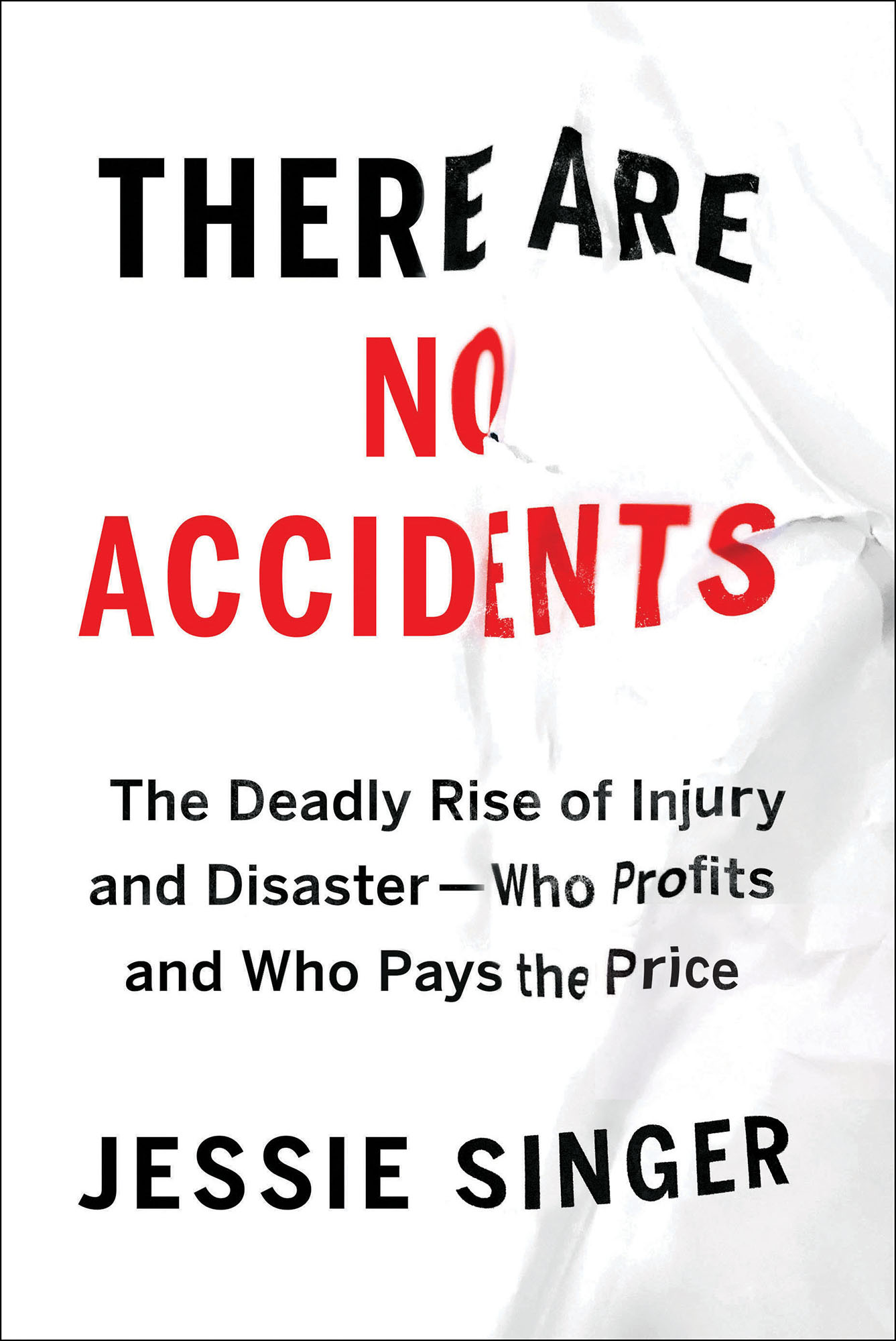Contents
Guide
There Are No Accidents
The Deadly Rise of Injury and DisasterWho Profits and Who Pays the Price
Jessie Singer

Simon & Schuster
1230 Avenue of the Americas
New York, NY 10020
www.SimonandSchuster.com
Copyright 2022 by Jessie Singer
All rights reserved, including the right to reproduce this book or portions thereof in any form whatsoever. For information, address Simon & Schuster Subsidiary Rights Department, 1230 Avenue of the Americas, New York, NY 10020.
First Simon & Schuster hardcover edition February 2022
SIMON & SCHUSTER and colophon are registered trademarks of Simon & Schuster, Inc.
For information about special discounts for bulk purchases, please contact Simon & Schuster Special Sales at 1-866-506-1949 or .
The Simon & Schuster Speakers Bureau can bring authors to your live event. For more information or to book an event, contact the Simon & Schuster Speakers Bureau at 1-866-248-3049 or visit our website at www.simonspeakers.com.
Interior design by Kyle Kabel
Jacket design by Richard L Joenes
Library of Congress Cataloging-in-Publication Data has been applied for.
ISBN 978-1-9821-2966-8
ISBN 978-1-9821-2969-9 (ebook)
With love and rage in memory of ERIC JAMES NG (19842006)
Tell yourself it was an accident
Isolated incident, part of the job
Yeah, well, tell that to the families
Kids without daddies
Tell it to God
Steve Earle Coal Country
Introduction Not an Accident
T his is a book about how we die in the United States. In particular, it is about the significant subset of those deaths we ignorethe accidents. More people die by accident today than at any time in American history. The accidental death toll in the United States is now over 173,000 people a year, or the equivalent of more than one fully loaded Boeing 747-400 falling out of the sky, killing everyone onboard, every day. Americans die by accident more than by stroke, Alzheimers disease, diabetes, pneumonia, kidney failure, suicide, septicemia, liver disease, hypertension, Parkinsons disease, or terrorism. Yet despite the death toll, there is no fun run for accidental death research or public memorial for the accidental dead. What we call accidentsthe traffic crashes, the house fires, the falls and drowningsrarely register as a point of public concern. Why are accidents so common? Why are accidents killing us more than ever? Why dont we talk about it? And what can we do to stem the rising tide of death and life-altering injury? This book seeks answers to those questions.
We can start with that 747. One of the many reasons accidents fail to register as a cost to society is that they rarely involve a fully loaded 747. Most of the time, when we die by accident, we die in ones and twos. These deaths do not make the nightly news. Rather, accidents are quick and lonely deaths, not reported beyond the police blotter, if at all. To die by accident is to fall down, or get run down, to drink the wrong thing or stand in the wrong place. More than a synonym for a traffic crash or a surprise pregnancy, accident is a euphemism for nothing to see here.
One person dies by accident every three minutes or so in the United States, the deaths appearing unrelated and not particularly worthy of note. But if we take a closer look at who dies by accident in America, we must take note. Black people die in accidental fires at more than twice the rate of white people. Indigenous people are nearly three times as likely as white people to be accidentally killed by a driver while crossing the street. People in West Virginia die by accident at twice the rate of people over the state line in Virginia, and across the board, the states with the highest rates of accidental death are also the poorest. This book is about that, toowhy some people die by accident and others do not.
Lets start with the simplest question: What is an accident? We can define it by what its not: not a disease like cancer, not an act of God like the weather, not an act of intention like murder. But while true, this answer is too simple to encompass the complex phenomena of accidents. Accident can be an excuse, an explanation, a mea culpa, or a crime. An accident can generate a legal or emotional response or none at all. If you make a mistake and want forgiveness, you can say: It was an accident. But also, if you wish to forgive someone for a mistake they made, you can tell them: It was an accident. An accident could mean someone wet the bed, or cheated on their spouse, or got knocked up. It is a checkbox on a death certificate and also what happened when BP blew up a deep-water drilling platform and dumped more than 134 million gallons of crude oil into the Gulf of Mexico. The Bulletin of the Atomic Scientists has set their doomsday clock at 100 seconds to midnightone reason is global warming; another is the risk of an accidental nuclear launch. And my best friend died by accident, at least according to the guy who killed him.
That is how I came to write this book.
When I was sixteen, I fell in love with a young man named Eric Ng. He was intense and kind. He was very handsome and very funny. We both had moms from Queens, a habit of sneaking out of the suburbs to go to punk shows on the weekends, and the righteous indignation of young activists. We made quick high school sweethearts and instant best friends.
In time I moved to New York City, and then he did, too. He became a math teacher and I a journalist. At twenty-three, my only life plan was that he would remain my constant.
Then, on December 1, 2006, Eric rode his bike into Manhattan but never rode home. A year later, I sat at the sentencing hearing of the man who had killed him, the wood-walled courtroom divided into victim and perpetrator like a wedding no one wants to attend. Before a judge sentenced the man who killed Eric to jail for driving under the influence and vehicular manslaughter, the man said he was sorry.
Words cannot express how truly sorry I am, he told the court, for this accident that happened.
It blares in my ear nowthis accident that happenedthe absence of accountability, the disembodied telling, as if the killer had nothing to do with the killing. But that day in court, I did not question it. I watched the children of the man who killed my best friend nod goodbye to their father and felt certain that Eric would not have wanted thisa man going to prison, more lives ruined, and so little done to prevent this from happening again.
To the epidemiologists who count the ways everyone dies in America, the term of art is unintentional injuries. Accidents, by their count, are when a person suffers physical trauma by external force and without intention. In The Injury Fact Book, Second Edition, there is a list of the twenty most common ways to die by accident in America in 1988:
Motor vehicle crashestraffic
Falls
Poisoning by solids/liquids
Fires and burns
Drowning
Aspirationnonfood
Aspirationfood
Firearm
Machinery
Aircraft
Suffocation
Poisoning by gas/vapor
Excessive cold
Struck by falling object
Electric current


